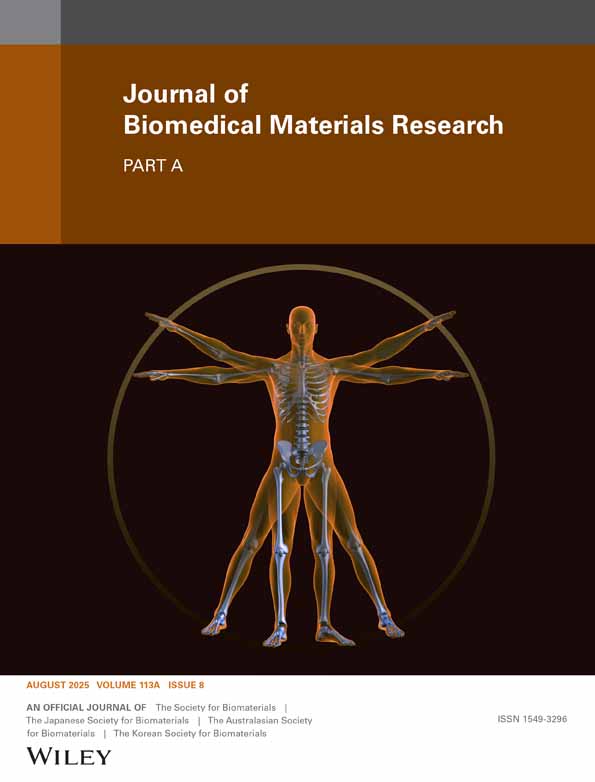Oxidative and hydrolytic stability of a novel acrylic terpolymer for biomedical applications
Abstract
Oxidative and hydrolytic biostability assessment was carried out on a novel acrylic material made of hexamethyl methacrylate (HMA), methyl methacrylate (MMA), and methacrylic acid (MAA). To simulate the in vivo microenvironment, solutions of H2O2/CoCl2 and buffered solutions of cholesterol esterase (CE) and phospholipase A2 (PLA) were used. As controls, film specimens were incubated in deionized water. Samples were incubated in these solutions at 37°C for 10 weeks before physical and mechanical properties were evaluated by size exclusion chromatography (SEC), 1H- nuclear magnetic resonance (1H-NMR), acid-base titration, and Instron tensile testing. The results from this study indicate excellent biostability of HMA-MMA-MAA terpolymers and thus their potential for use in biomedical devices for long-term implantation. © 2005 Wiley Periodicals, Inc. J Biomed Mater Res, 2005




